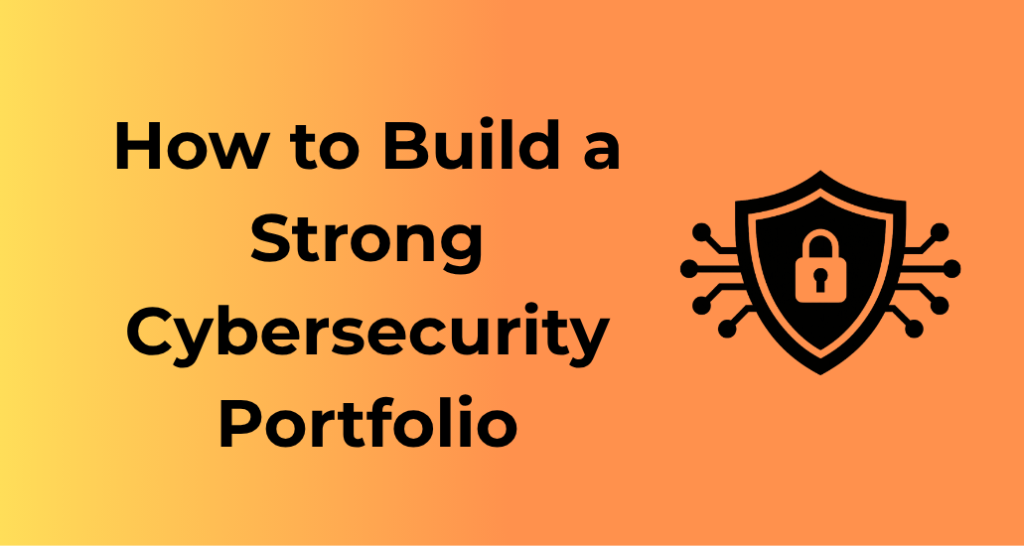Ah, the beginning. Every strong cybersecurity portfolio starts with a sturdy foundation. Just like you wouldn’t build a house without the right groundwork, addressing the building blocks of cybersecurity is key before diving headfirst into advanced tactics. But what exactly are those fundamental blocks? Let’s dive in.
Common Threats and Gaps: Where Many Portfolios Fall Short
Let’s get real. Even the most robust cybersecurity portfolios often have chinks in their armor, thanks to overlooked threats or gaps. These weak points can act as open doors, inviting malicious actors inside your systems before you even realize it. But fear not! We’re here to identify these pitfalls and guide you towards shoring them up. Ready? Let’s dive in.
The Most Common Threats
First, let’s shine a light on common threats lurking in the digital shadows. Every cybersecurity portfolio faces unique risks, but several usual suspects keep popping up:
- Phishing Attacks: These sneaky emails or messages lure users into sharing sensitive data or clicking malicious links. They’re adaptive and creative, turning this common threat into a persistent headache.
- Ransomware: This one’s a nightmare—hackers encrypt your data and demand a ransom to release it. If your portfolio isn’t prepared to handle ransomware, the costs can skyrocket in seconds.
- Insider Threats: Not all dangers come from the outside. A disgruntled employee, or even unintentional mistakes by trusted staff, can seriously cripple your organization’s security.
- Outdated Software: Neglecting updates and patches can leave your systems as vulnerable as unlocked doors. Bugs in aging software are prime targets for hackers.
- Ineffective Passwords: Reusing weak passwords or failing to enforce strong policies is equivalent to using “123456” as the key to your cyber castle. (Spoiler: Not okay!)
Where Portfolios Often Go Wrong
So, why do portfolios fall short when it comes to tackling these threats? Typically, it boils down to the following oversights:
- Lack of Regular Threat Assessments: Many organizations don’t revisit their vulnerabilities frequently enough. Threats evolve, and your portfolio needs to evolve with them.
- Over-Focusing on Technology: While having the latest gadgets is important, ignoring the “human factor” often results in disaster. Employees need training in recognizing cyber risks, or even the best antivirus software won’t save you.
- Siloed Data and Systems: A fragmented approach to cybersecurity makes it difficult to detect and address threats comprehensively. Every system in your portfolio needs to work together seamlessly.
- Poor Incident Response Plans: Having no (or inadequate) plans for how to react once a breach occurs can turn a small problem into a full-blown catastrophe.
- Ignoring Small Gaps: Sometimes organizations focus all their attention on big-ticket defenses, leaving small vulnerabilities unaddressed. Hackers? Oh, they LOVE these forgotten cracks in your armor.
How You Can Do Better
The good news? These challenges aren’t insurmountable. A few thoughtful strategies can turn things around:
- Conduct Threat Audits: Regularly review your portfolio to identify emerging risks and address outdated defenses. A proactive approach is always the best investment.
- Educate Your Team: Raise cybersecurity awareness through training sessions and practical exercises. Empower your employees to act as your first line of defense.
- Prioritize Patch Management: Don’t wait to install patches for software vulnerabilities. Schedule updates promptly as part of your routine.
- Build a Unified System: Work towards integrating your cybersecurity tools into a cohesive defense mechanism. This reduces blind spots and ensures better monitoring.
- Test and Retest: Regular stress tests can show you where gaps exist before a real-world attack makes them painfully clear.
Categorizing Crucial Components: Tools, Protocols, and Plans
Hey there! Let’s dive into the essential building blocks of any powerhouse cybersecurity portfolio. Don’t worry; we’ll keep it both informative and approachable, so consider this your personal guide to laying out the crucial components of success. Think of this as organizing your cybersecurity toolkit—every piece has a purpose!
1. Tools: Your Cybersecurity Arsenal
Imagine heading into a battle without the proper gear. Similarly, your cybersecurity strategy is only as robust as the tools you deploy. Here’s where to start:
- Firewalls: These act as the first line of defense, keeping malicious actors at bay. Look for modern, adaptive firewalls for maximum protection.
- Antivirus and Anti-Malware: Think of these as your on-the-ground guards, constantly scanning for intruders and promptly eliminating threats.
- Encryption Tools: Safeguard sensitive data in transit and at rest by encrypting documents, emails, and backups—leaving cybercriminals scratching their heads.
- SIEM Platforms: Security Information and Event Management (SIEM) tools gather and analyze data to detect anomalies, keeping you ahead of the curve.
Pro Tip: Avoid “tool sprawl” by sticking to a curated selection of best-in-class solutions that integrate smoothly.
2. Protocols: Your Rulebook for Cyber Hygiene
Okay, so now you’ve got the right tools. But how do you use them effectively? This is where well-defined protocols come in. Think of them as a disciplined, proactive approach to staying secure. Here are a few must-haves:
- Password Management: Implement policies mandating strong, unique passwords and consider using a password manager to eliminate sloppy practices.
- Access Controls: Adopt a “least privilege” approach by only granting staff permission to what they absolutely need.
- Incident Response Protocols: Mistakes and network breaches happen—what matters is how you react. Have a clear, rehearsed response plan to minimize damage.
- Data Backup Strategy: Set up regular, automated backups and test them frequently. If disaster strikes, you’ll want to get back up and running quickly.
Pro Tip: Keep protocols clear, accessible, and easy to follow. The best plans are useless if they sit unread in a drawer.
3. Plans: Plotting the Road Ahead
Now, let’s talk about plans—the forward-looking strategies that prepare you for whatever challenges lie around the corner. Here are a few to anchor your cybersecurity portfolio:
- Risk Assessment Plan: Identify critical assets, map out vulnerabilities, and prioritize mitigation efforts.
- Security Awareness Training: Teach your team members to recognize phishing attacks, social engineering tactics, and other common threats.
- Disaster Recovery Plan: Prepare for the worst-case scenario with a detailed playbook outlining steps to recover from system-wide failures or breaches.
- Regulatory Compliance Plan: Depending on your industry, meeting legal guidelines like GDPR or HIPAA may not be optional. Stay informed and audit frequently.
Reducing Vulnerabilities with Layered Defense Strategies
Let’s talk about one of the golden rules of cybersecurity: “Don’t put all your eggs in one basket.” This principle is at the heart of layered defense strategies. Also known as “defense in depth,” it’s a proactive, multi-tiered approach to protecting systems, networks, and data from threats. If one line of defense fails, the others pick up the slack. It’s time to dive deeper into why this strategy is an absolute superstar in any cybersecurity portfolio.

Why Layered Defense Matters
Think of your digital environment as a castle. You wouldn’t rely solely on the drawbridge to protect your treasure, right? You’d have moats, walls, guards, and maybe even a dragon (if that were possible). Similarly, a layered defense approach ensures that if one barrier falters, there are others to hold the line. It’s about redundancy and resilience in the face of inevitable threats, ranging from phishing attacks to zero-day exploits.
Key Layers of Defense
A robust layered defense strategy goes beyond just having a strong password or a single security tool. It’s about putting together an orchestra of practices, tools, and policies to work in harmony. Here’s what you should consider:
- Perimeter Security: Think firewalls and network access controls. These act as the initial barrier that keeps unauthorized users at bay.
- Endpoint Protection: Devices like laptops, smartphones, and tablets are gateways for attackers. Endpoint protection tools, like antivirus software and host intrusion prevention systems, are essential safeguards.
- Application Security: Make sure your software is patched and up to date. Web application firewalls (WAFs) can also help protect your apps from malicious inputs like SQL injections.
- Data Encryption: Protect sensitive data by encrypting it both at rest and in transit. Even if attackers intercept the data, it will be unreadable.
- Identity and Access Management (IAM): Use strong authentication protocols, multi-factor authentication, and role-based access controls to ensure only authorized individuals get in.
- Incident Detection and Response: Deploy tools like Security Information and Event Management (SIEM) systems to monitor for suspicious activities. Have a response plan ready when something goes wrong.
Benefits of a Layered Approach
By putting in the effort to establish multiple layers of security, you’ll find yourself breathing a little easier (and sleeping a little better). Here’s what you’ll gain:
- Higher Resilience: A failure in one area won’t mean instant doom. Other layers will mitigate or stop the attack.
- Flexibility Against Evolving Threats: Cyberattacks keep changing, but a layered defense gives you more chances to adapt and counteract various tactics.
- Compliance: Many data protection regulations require a layered approach to meet security standards.
Enhancing with Real-World Simulations and Stress Tests
So, you’ve set up a solid cybersecurity portfolio, and it’s looking pretty strong on paper—awesome! But have you ever wondered, “What would happen if a real-life hacker tried to breach it?” Well, that’s where the magic of real-world simulations and stress tests comes in. These are essential tools for pushing your portfolio beyond theory into actionable, practical protection.
Why Are Simulations and Stress Tests So Important?
The online world is full of surprises, and attackers are constantly evolving their methods. Simply put, it’s not enough to trust that your portfolio will stand up to threats—you need to prove it. Simulations and stress tests provide a dynamic way to uncover hidden gaps in your defenses before hackers do.
Think of it like a fire drill. We don’t wait for a real fire to learn how to evacuate a building safely. We practice until it’s second nature. Similarly, these tests prepare your cybersecurity setup for “what if” situations, ensuring that when the pressure’s on, everything holds strong.
Different Types of Simulations
- Penetration Testing: You hire cybersecurity experts (or use automated tools) to mimic the behavior of an attacker. Their role is to find vulnerabilities in your systems, demonstrating areas that need shoring up.
- Phishing Simulations: These measure how well employees or users can identify and respond to phishing attempts. Success here is about awareness training—it’s a key team effort!
- Disaster Recovery Drills: Simulate data breaches, ransomware attacks, or even natural disasters. Practice how quickly you can recover data, restore operations, and communicate effectively.
Each type of simulation has its unique benefits, depending on where your weaknesses may lie. The important part is to select the approach that aligns with your specific cybersecurity goals.
How to Make the Most of Stress Testing
Stress testing takes things one step further by seeing how your system performs under high-pressure scenarios. Imagine a DDoS attack overwhelming your servers or a massive influx of malware attempting to breach your firewalls. Stress tests will measure whether your defenses buckle under the strain.
Here’s how to get started:
- Set Clear Objectives: Identify what you’re testing for. Is it network resilience? Software behavior under pressure? Your ability to scale under duress?
- Establish Parameters: Define the severity of the simulated conditions. Are you testing for a targeted attack or something broader, like a cyber pandemic?
- Observe and Document: Watch how your systems respond, and monitor your team’s reaction time. Take detailed notes on both successes and failures.
Stress tests are like playbooks for a sports team. The moment things go awry, you won’t be scrambling in panic. You’ll know exactly what needs to be done.
Monitoring and Updating: Staying Ahead of Emerging Threats
Picture this: You’ve built a fantastic cybersecurity portfolio. Your protocols are airtight, your tools are top-notch, and your defense strategies are rock solid. But here’s the thing—cybersecurity is not something you can simply “set and forget.” Staying ahead of rapidly evolving threats requires constant monitoring and nimble updates. Let’s chat about the importance of keeping everything fresh and proactive!
Why Monitoring is Key
One of the critical truths about cybersecurity is that it’s always in a state of flux. New threats emerge daily, and what worked last month might not cut it today. Monitoring your systems is like having a security guard patrolling the perimeter of a castle—it ensures nothing sneaks by unnoticed.
- Real-time Threat Detection: Modern monitoring tools can detect unusual activity the moment it happens. Whether it’s an unexpected login attempt or data being accessed oddly, these tools flag it fast.
- Log Analysis: Regularly reviewing security logs is an underrated but absolutely essential practice. Patterns buried in logs can reveal brewing issues before they escalate.
- Early Warnings: Systems with robust alerting mechanisms notify you of vulnerabilities as soon as they surface, giving you a head start on neutralizing them.
The Art of Updating
If monitoring is about catching potential problems, updating is about staying prepared for them in the first place. Cybersecurity is a race—and staying ahead means continually improving your tools, patching vulnerabilities, and upgrading defenses.
- Patch Management: Every software, tool, or protocol has updates, which often include critical security fixes. Skipping patches is like ignoring a leak in your roof—it only gets worse.
- Review Policies and Training: As the threat landscape changes, so should your policies. Are there new regulations or requirements to consider? And don’t forget team training—your colleagues are a critical line of defense.
- Update Documentation: This step is often overlooked! Your cybersecurity portfolio should reflect every update, no matter how small. Staying consistent ensures clarity and accountability, especially during audits.
Embracing a Proactive Attitude
Rather than viewing monitoring and updating as a chore, think of it as cybersecurity maintenance. It’s your opportunity to outsmart attackers, future-proof your efforts, and bolster your system’s resilience.
Quick Tips for Staying Ahead:
- Automate Monitoring: Use advanced monitoring tools equipped with AI to identify threats and anomalies in real-time. Automation saves time while ensuring nothing slips through the cracks.
- Subscribe to Threat Intelligence Feeds: These feeds keep you informed about new threats and vulnerabilities seen across the industry. Knowledge is power!
- Schedule Regular Reviews: Make monitoring and updating a periodic, non-negotiable part of your cybersecurity calendar. Whether that’s monthly or quarterly, consistency is key.
Practical Assessment: Measuring Strengths and Weaknesses
Let’s face it, friends—your cybersecurity portfolio might look like a fortress on the surface, but guess what? Every defense has its cracks! The only way to truly know whether your defenses are standing tall or teetering on shaky ground is to perform practical assessments. Don’t be intimidated though; let’s walk through this step-by-step in a way that’s not just practical but also doable. By the end, you’ll be a pro at evaluating the robustness of your portfolio.

Why Practical Assessments Matter
Think of your cybersecurity measures like a finely tuned car. You wouldn’t just slap some shiny new tires on and hit the road without testing the brakes, right? Practical assessments ensure that your cybersecurity systems aren’t just theoretically secure but also effective in the face of actual challenges.
Beyond that, they help you:
- Identify weak points: Discover vulnerabilities before someone else does.
- Understand dependencies: Know how one system failure might impact others.
- Prove compliance: Show stakeholders and auditors that you’re walking the talk.
Key Types of Practical Assessments
You wouldn’t use the same tool for every repair, so your approach to assessments should be tailored too. Here’s a toolbox of techniques to get you started:
- Penetration Testing (Pentesting): This is the “let’s pretend to be the bad guy” approach. Ethical hackers simulate real-world attacks on your system to uncover vulnerabilities. It’s like a surprise fire drill but for your cybersecurity defenses.
- Vulnerability Scanning: A more automated way to check for known weaknesses in your system. This isn’t as in-depth as pentesting, but it’s a good regular check-up tool.
- Phishing Simulations: Since phishing is one of the most common attack vectors, run tests to see how well your team recognizes harmful emails. This provides actionable insights for user training.
- Log File Monitoring and Forensics: Dive into your logs to look for any suspicious activity or trails of past exploits.
Setting a Baseline
Before jumping into your first assessment, it’s helpful to have a baseline. A bit like weighing yourself before starting a fitness journey, you need to know where your security currently stands. Document all existing policies, tools, and known vulnerabilities. This will help track progress over time and understand which measures are genuinely making an impact.
Metrics That Matter
A solid assessment produces data, but let’s focus on what’s meaningful:
- Response time: How quickly can your systems detect and deflect attacks?
- Failure points: What pathways exist for potential breaches?
- Downtime: If something goes wrong, how long does recovery take?
These metrics help you prioritize fixes and fortify defenses where it’s most critical.
The Follow-Up: Rinse and Repeat
Cybersecurity isn’t a “set it and forget it” type of deal. After completing your assessment, make sure to implement needed changes, retest, and continuously iterate your processes. It’s perfectly okay to be a little relentless here—it’s your digital kingdom, after all!








